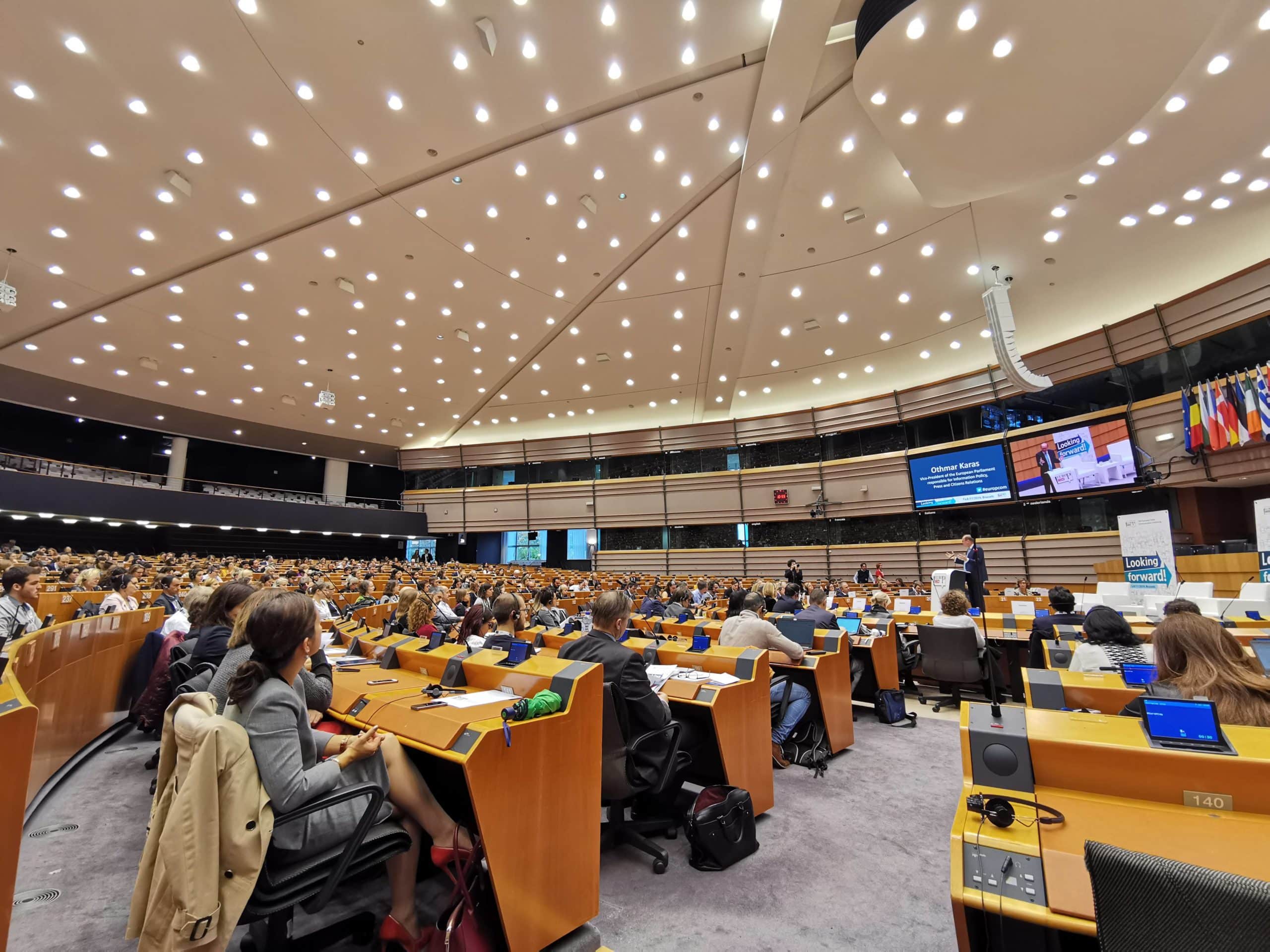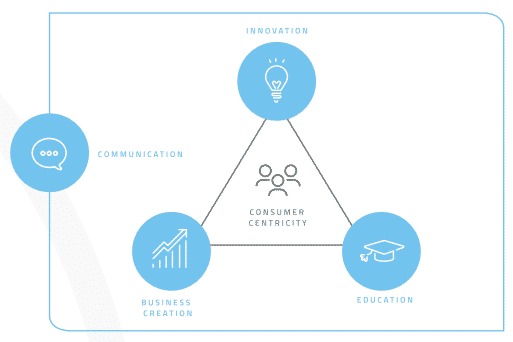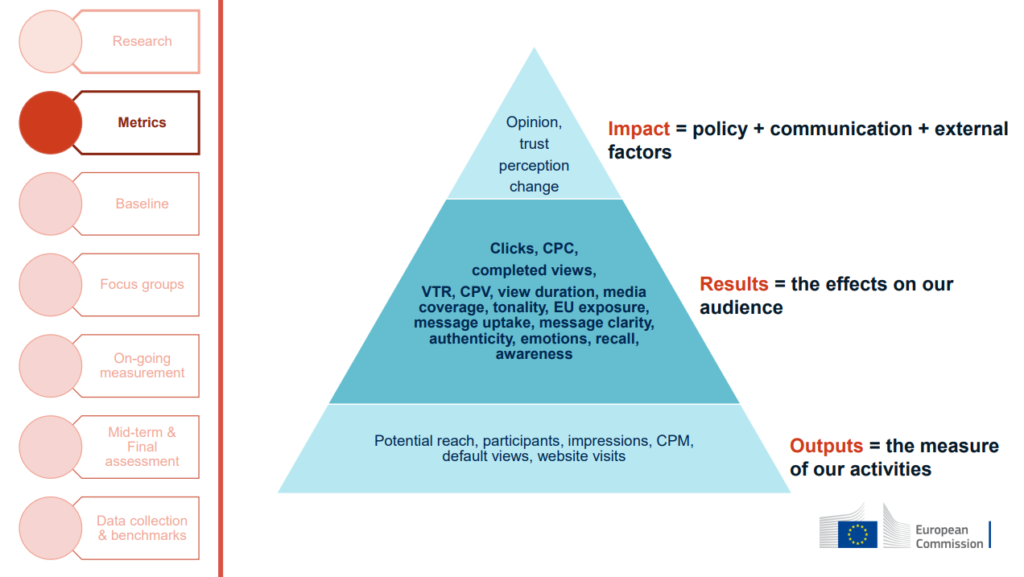
The impact of communications used to be treated as an afterthought: a last-minute ditch effort to support broader business and policy efforts, a way of simply getting the message out.
Yet now communications is starting to position itself at the centre of the organisation, driving change and policy, using data, analytics and ROI as tools to bring forward positive results and impact.
We’re witnessing the beginning of a new chapter: impact communications is now a pillar of European policy and business strategy. It’s a force for good in its own right, shaping new initiatives across Europe.
For example, in the strategic agenda of EIT Food, the European Union’s food innovation agency, communication was defined as the fourth pillar of the organisation’s mission:

“Communication will be the linking element leveraging the knowledge triangle” says the strategy document, “facilitating two-way communication and engaging consumers as critical factors for success and impact of EIT Food” .
In the past, communications was only a supporting function within EU agencies, yet now, as illustated in this example with EIT Food, communications has become a key strategic lever within the organisation in order to help it to achieve its strategic objectives, while aligning and bringing together all the pillars of the organisation.
A new chapter has started
At the recent EuropCom conference, the leading European Communications Conference for European agencies and institutions, this new positioning was obvious and it became clear that communications professionals are truly playing an active, leading role in policy and outcomes, measuring engagement and tracking impact with a focus on results.
Paloma Escudero, Director of Communications at UNICEF, stressed the fact that impact is now the main objectives of the organisation’s communications.
“We communicate to move the needle for change” said Escudero.
Whether it is a programme around feeding practices in Rwanda, a campaign to support breastfeeding in India, or interactive communication tools and materials that help Ethiopian mothers protect their babies from microbial infections — Escudero said that measuring impact has become the norm at UNICEF.
“We decided that KPI’s will be the programmatic resource : communications is a means to an end, and this means focusing on impact for issues like child mortality, education and health. At UNICEF we need to prove that our communications strategy is successful on local, national and global levels, helping to truly deliver a better world for children”.
Escudero was not alone in her quest to showcase the relevance and impact of communications in this new chapter.
The EuropCom session “Checking the numbers: evaluation of communication campaigns” was one of the most popular talks, something that would not have happened a few years ago (see the full session here).
During the sessions, communications directors were like data scientists unveiling a formula for success, showing complex graphs and formulas to illustrate behaviour change.
They showed how they are leading campaigns in detailed manners, targeting various audiences in various different ways, communicating with them separately with personalised, customised messages and tracking everything at all levels.
Communications is starting to position itself at the centre of the organisation, driving change and policy, using data, analytics and ROI as tools to bring forward positive results and impact.
Nicholas Bruneau Tweet
How to adopt impact communications strategies
Of course, to measure impact is not always easy. It means measuring attitudes before and after a campaign, for example, in order to truly understand the impact of your communications activities.
“Most non-profit institutions struggle to track impact. They track outputs and outcomes but sometimes wrongly label impacts” said one of the speakers, Richard Addy, co-founder and director of AKAS London. (see his presentation here).
“Different KPIs are needed to help understand each step of the campaign evaluation” added Frank Knecht, Strategy and Corporate Communication, DG COMM, European Commission.
The following slide from Knecht’s presentation is great as it really illustrates how the success of the European Commission’s #EUandMe campaign was measured, with a focus on impact and results, not just outputs:

The overall view is that all these different touch points create a story that can illustrate the success of a campaign.
This allows the communications manager to assemble a holistic view of his work, and Richard Addy gave some great insight to achieve this:
- You need to be clear and systematic about the audiences that you are trying to engage: publics, influencers or decision makers.
- You should use the full set of tools to track impacts. Most institutions are focusing only on analytics.
- You should also track the impact of all of your outputs: including publications, articles, posts press releases, speeches and videos.
- “Evaluation means understanding what has worked and what has not worked. Celebrate your successes but also acknowledge your failures and learn from them” added Frank Knecht with a touch of humility.
By clarifying impact goals in advance of the campaign it becomes easier to measure them afterwards.
Evaluation means understanding what has worked and what has not worked. Celebrate your successes but also acknowledge your failures and learn from them.
Frank Knecht Tweet
Do you want your communications to be impact-led?
It’s an exciting time to be working in digital communications and I’m eager to help support public organisations to reach their goals and objectives in this new data-driven world, with a focus on impact communications.
Let me know what you think and if you have any favourite tools and strategies that help you to be show the impact of your communications campaigns please feel free to share in the comments below.

